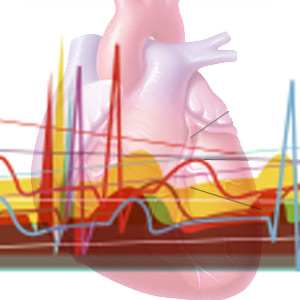Indians Particularly Vulnerable to Heart Attacks

Each year in the U.S. alone, more than 1.5 million people suffer a heart attack. Almost 500,000 die, half in the first few hours, and before they reach the hospital. Women often think that it is a man’s problem, but six times more women die from heart attack than from breast cancer.
For Indian-Americans, the situation is worse than for the average American. Heart attack may come 10 years earlier and in a higher percentage of the population than in other ethnic groups. About one-third of all first heart attacks among Indians occur in Indians younger than 45, and is often more severe, diffuse, and multi-vessel compared to whites despite their younger age, smoking less, and lower rates of hypertension. The prevalence of metabolic syndrome, associated with heart disease and diabetes, is double that of whites at most BMI (body mass index) levels and four times higher in those without obesity. Among Indians in the U.S., Indian women have the highest Coronary Artery Disease (CAD) mortality, 30% higher than Whites and 325% higher than the Chinese.
It is therefore vital for Indian Americans to be aware of heart attack symptoms and to act quickly if you think you might be having a heart attack. Don’t “wait and see”! Don’t let a lack of health insurance stop you, because hospitals have state and federal funds for such emergencies.
Sudden or not? Almost half of all heart attacks are sudden. If there is a warning, it might be breathlessness, fatigue, or unstable angina (intermittent pressure or an ache beneath the breastbone) a few days or weeks beforehand.
Symptoms or not? Heart attack symptoms include uncomfortable pressure, squeezing, fullness, or pain, including pain that goes away with rest. Pain may spread to the left arm, back, neck, or jaw; about one third of people who have a heart attack do not have pain in the chest at all—these are more likely to be women, nonwhites, over age 75, with heart failure or diabetes, or people who have had a stroke. There may be nausea, profuse sweating—like a stomach upset—or pounding of the heart, anxiety, or a feeling of fainting or impending doom. Sometimes a person may even have pain in the mid-abdominal region and mistake it for ‘gas.’ Older people and women often take longer to realize or admit that they need medical help.
Symptoms vary greatly, but about 20% of people who have a heart attack have only mild symptoms or none at all. Such a silent heart attack may be recognized only when ECG is done some time afterward.
Risk factors for heart attacks are high blood pressure, diabetes, high cholesterol, a family history of heart disease, cigarette smoking, being obese or sedentary, and extreme unusual stress. Lifestyle improvements for prevention are vital, and having an annual physical is recommended.
Testing can provide lifesaving information. A simple, quick, painless, and fairly inexpensive test is Coronary Artery Calcium Scoring, which uses a special x-ray called computed tomography (CT). Cost is less than CT angiography and much less than angiograms; insurance may pay for it with a doctor’s order, and Medicare covers it. Based on the reading of the Calcium Score, a prediction may be made as to whether any coronary blockages may be present, and further testing may or may not be indicated at that point. This simple test may be a life saver.
Be ready to act! It is important that even if you are not sure you are having a heart attack, you should have it checked out. Don’t wait more than five minutes. Chew a single full-sized 325-mg aspirin tablet, but don’t use an enteric-coated tablet, which will act slowly even if chewed. Call 911 and then your doctor.
Dr. Parikh is Board Certifi ed in Nuclear Cardiology, and is CEO of Georgia Clinics, PC.
[Gulshan Harjee, M.D., is a board certified internist in private practice with an emphasis on prevention. Please email your health and medical questions for consideration in this column to: gharjee@comcast.net. The material in this column is of a general nature, and must not be construed as specific medical advice. This column rotates monthly along with the Fitness Lifestyle column by Aarti Patel.]Enjoyed reading Khabar magazine? Subscribe to Khabar and get a full digital copy of this Indian-American community magazine.
blog comments powered by Disqus










